Abstract
The populations of viable Nodularia (Cyanobacteriaceae) propagules in the sediments of the Peel-Harvey Estuary in Western Australia were assessed over location, time, and depth. The sediments of the Harvey Estuary had greater numbers of Nodularia propagules than those of the contiguous Peel Inlet. This was consistent with the distribution of Nodularia blooms in the system. The sediment populations of Nodularia propagules has increased up to 100-fold at the study sites over a 4-year period during which three blooms have occurred. It is considered that the majority of the propagules are akinetes. The significance of the sediment akinetes in providing the inoculum for rapid onset of Nodularia blooms is discussed. The population of akinetes decreased with depth, but viable akinetes were still found at 35 cm, the maximum depth sampled. Bioturbation by polychaete worms is likely to be significant in the distribution of akinetes to these depths.
Full text
PDF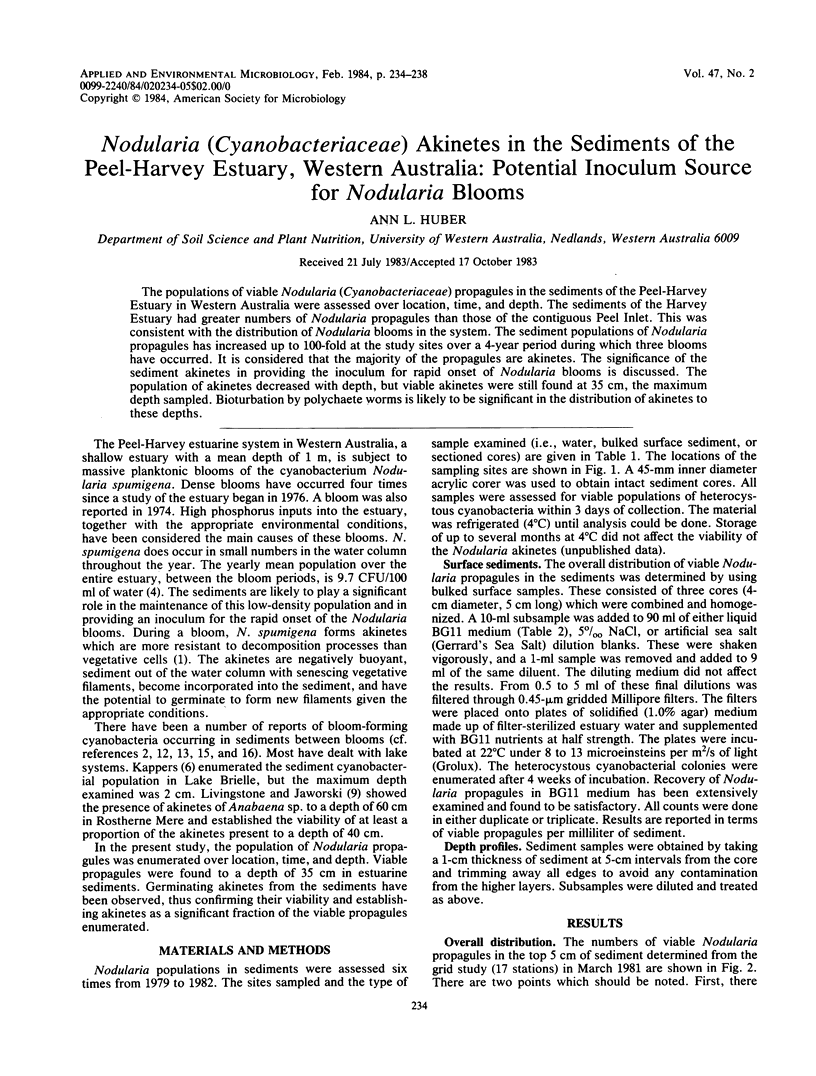
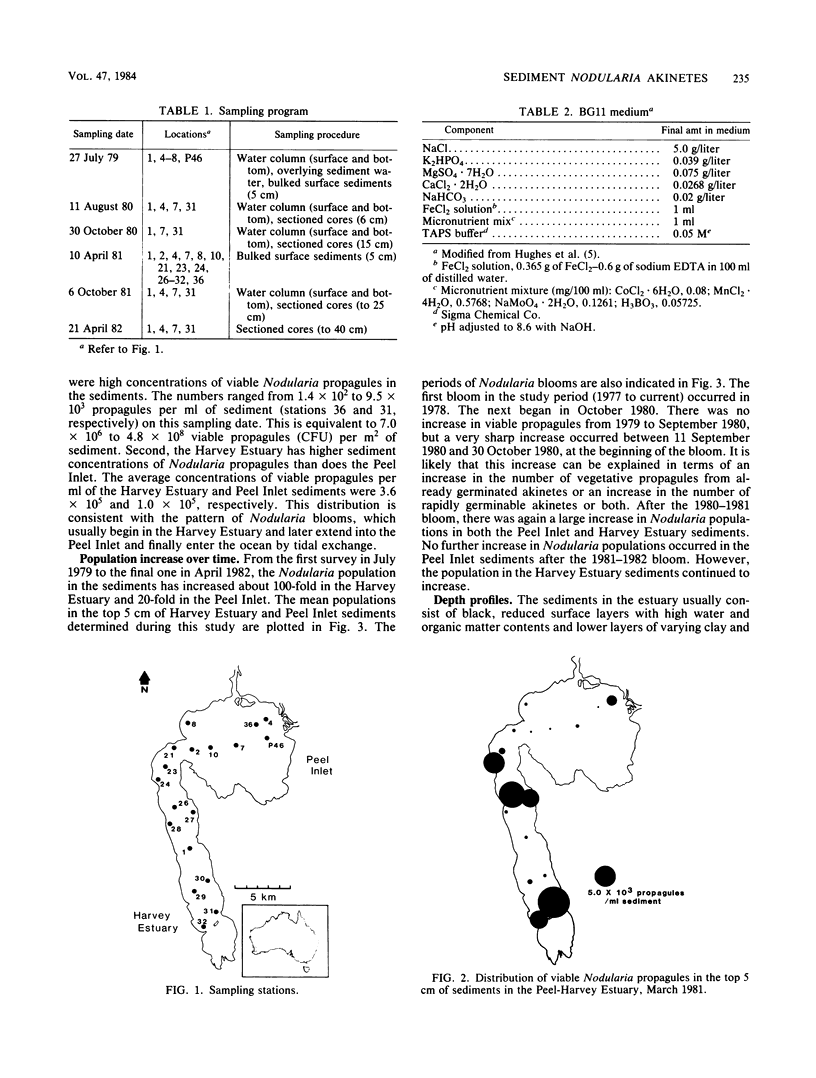
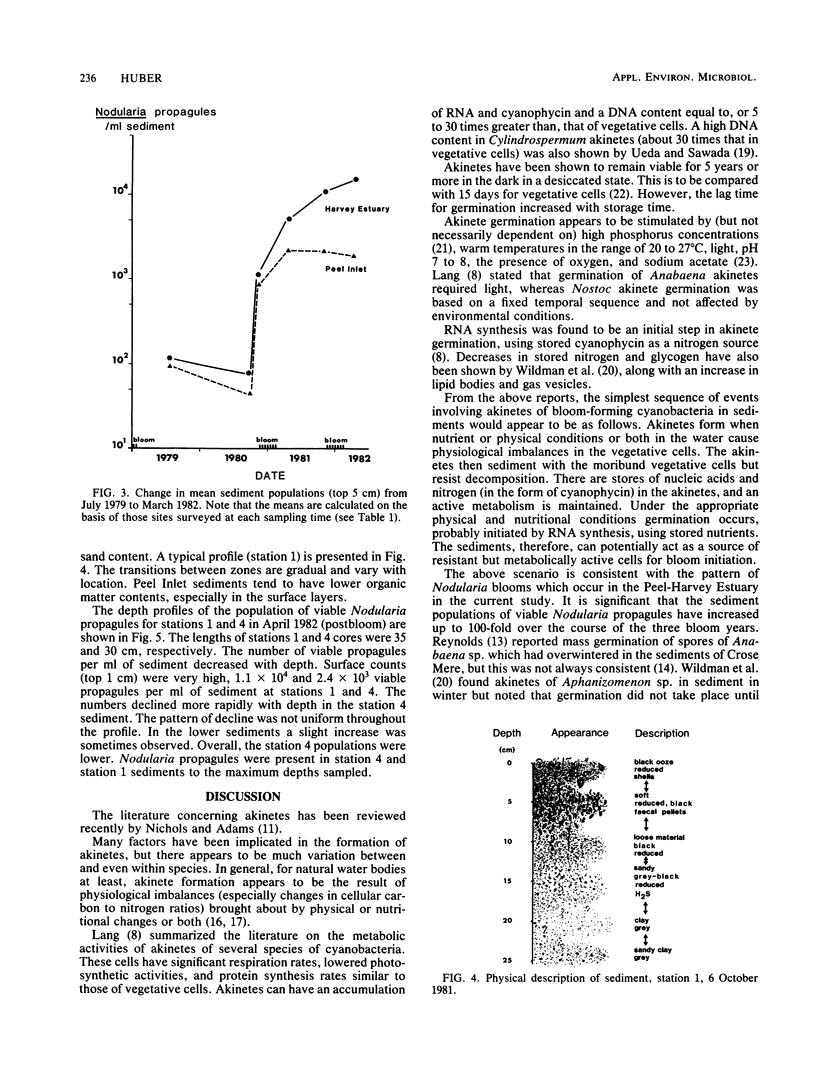
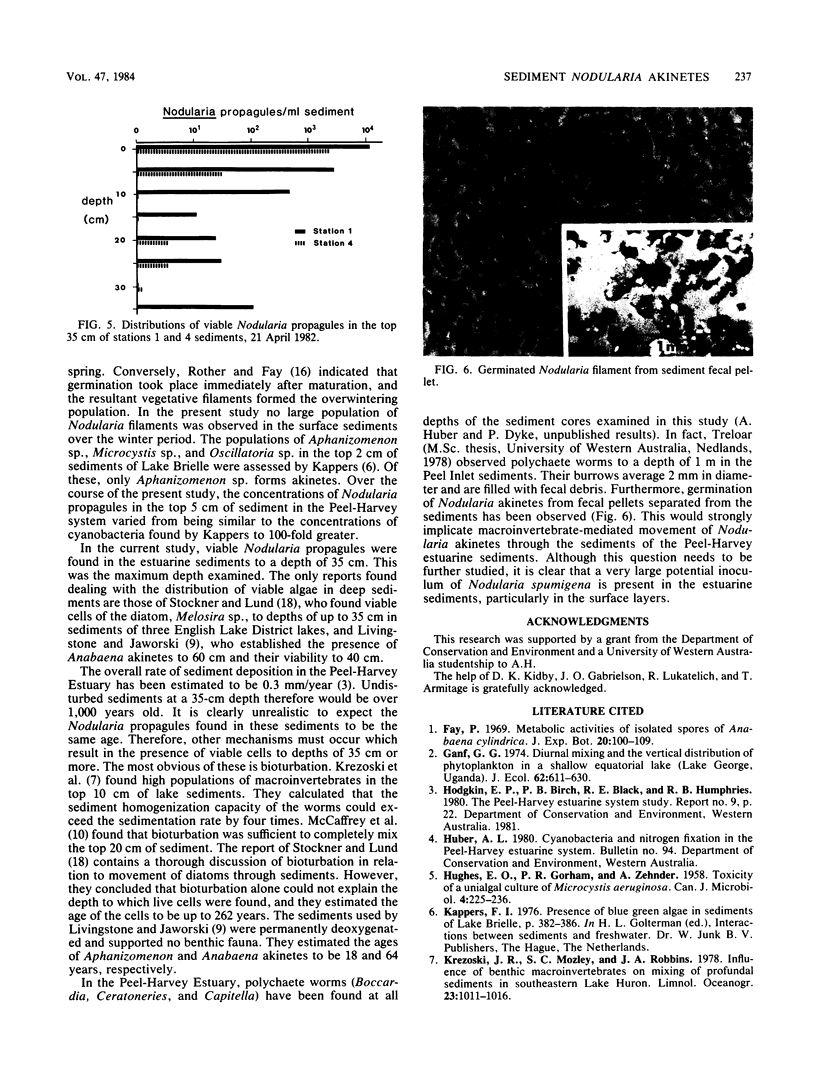
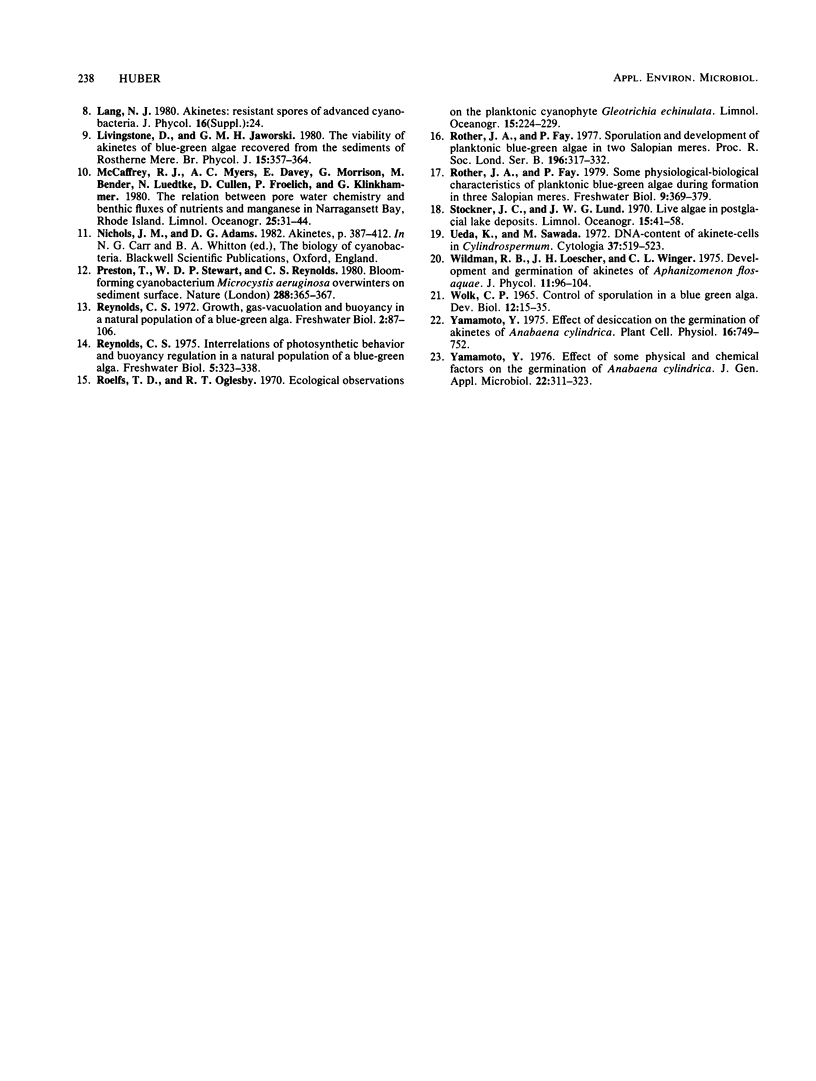
Images in this article
Selected References
These references are in PubMed. This may not be the complete list of references from this article.
- HUGHES E. O., GORHAM P. R., ZEHNDER A. Toxicity of a unialgal culture of Microcystis aeruginosa. Can J Microbiol. 1958 Jun;4(3):225–236. doi: 10.1139/m58-024. [DOI] [PubMed] [Google Scholar]
- Wolk C. P. Control of sporulation in a blue-green alga. Dev Biol. 1965 Aug;12(1):15–35. doi: 10.1016/0012-1606(65)90018-7. [DOI] [PubMed] [Google Scholar]



